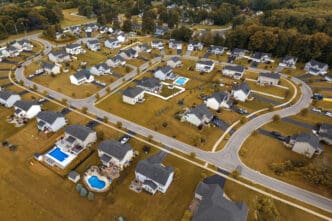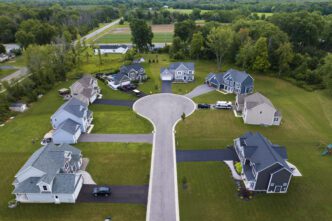Executive Summary
The Trajectory So Far
Assessing Risk and Value
Expert Predictions and Forecasts
Home prices in the U.S. have begun to stabilize in recent months following years of rapid appreciation, though real estate experts do not foresee a dramatic decline in costs. This stabilization comes as mortgage rates have slightly eased and some cities experience minor rent reductions, signaling a potential shift in the housing market dynamics driven by a mix of policy interventions, evolving buyer behavior, and demographic trends.
Market Dynamics and Price History
The housing market has seen substantial growth since the onset of the pandemic, with the median sales price for a new house reaching $413,500 in August, a significant increase from $321,400 five years prior. This surge has pushed average home prices to five times higher than average incomes, an unprecedented record. Rental costs also experienced sharp increases, particularly during the pandemic, outpacing overall inflation last year.
State and local policymakers have been actively addressing the rising shelter costs for the past decade. Efforts include rewriting zoning codes to encourage low-cost housing development, such as permitting accessory dwelling units and, in some areas, banning single-family zoning. State-level initiatives have also introduced rent caps, promoted denser housing, and sought to limit local housing regulations.
Recent Stabilization and Expert Outlook
These policy efforts, combined with other market forces, have contributed to a recent slowdown in price growth. While prices are not generally falling, their rate of increase has moderated. Mortgage rates have recently dipped to around 6 percent, down from a steady 6.5-7.5 percent in previous years. Furthermore, some major cities that saw a boom in apartment construction have experienced slight declines in rent.
Despite these signs of stabilization, analysts largely agree that a dramatic drop in housing costs is unlikely. Daryl Fairweather, chief economist at Redfin, notes that the housing construction boom initiated during the pandemic is concluding. Construction costs continue to rise, with future increases anticipated due to federal tariffs, which will keep prices for new builds elevated.
Chris Herbert, managing director of the Harvard University Joint Center for Housing Studies, explains that homeowners often resist selling their properties for less than their purchase price, anchoring expectations in their mortgage payments and psychology. He highlights that previous price spikes were influenced by factors like demographic shifts, regional economic growth, and easy mortgage access before the 2008 recession. The recent surge was fueled by a supply shortage, pent-up demand, and exceptionally low mortgage rates around 3 percent during the pandemic, alongside a temporary suspension of student loan payments that boosted purchasing power.
Nadia Evangelou, a senior economist at the National Association of Realtors, points to a “lock-in effect” where homeowners with low pandemic-era interest rates are reluctant to sell, knowing new mortgages would likely be higher. This dynamic reduces housing market turnover. Additionally, increased competition from large corporations acquiring single-family homes and a rise in cash purchases, particularly in markets like Florida, further contribute to sustained high prices.
Anticipating Future Trends
Looking ahead, Herbert expects home prices to level out over the next few years, allowing incomes to gradually catch up and improve overall affordability. However, on a longer timeline, he suggests that shrinking demand could eventually lead to lower housing costs. The rate of household formation has declined significantly since its pandemic peak and is projected to remain historically low over the next decade due to demographic trends, including an aging baby boomer population and fewer children in young families.
Herbert also noted that a significant drop in immigration, a stated policy goal under the Trump administration, could further reduce the household formation rate. He predicts that within the next three to five years, the housing conversation will shift from concerns about supply shortages to discussions about the weakness of demand.








